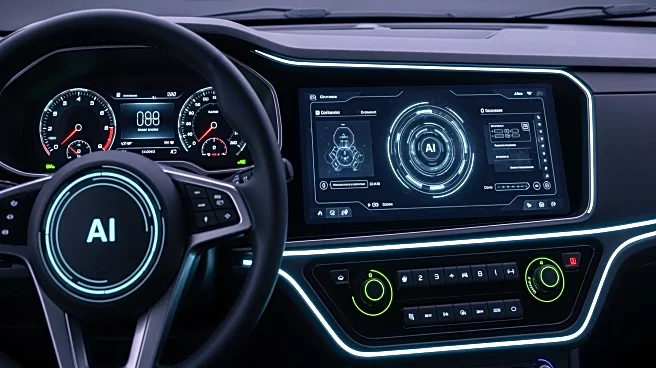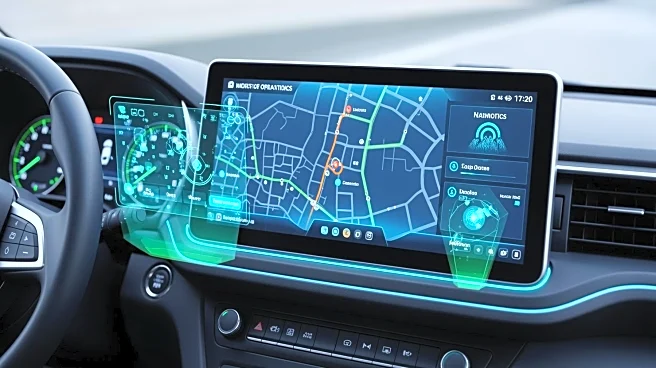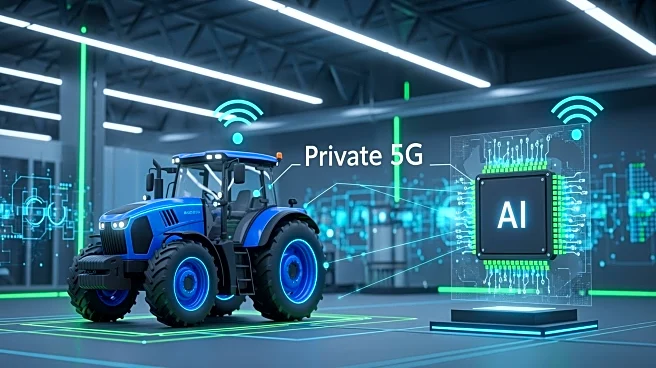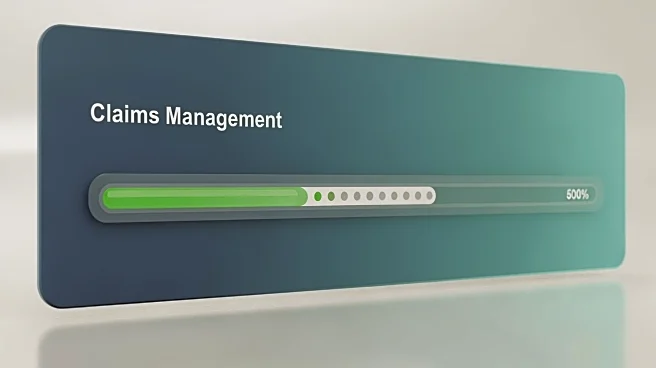What's Happening?
Penske Logistics is at the forefront of integrating artificial intelligence (AI) and automation to improve safety in commercial vehicle operations. The company is leveraging advanced technologies to address
challenges such as labor shortages, rising insurance premiums, and safety concerns. Motive, a fleet management and driver safety platform, has introduced the Motive AI Coach, which provides personalized feedback to drivers using AI-generated coaching videos. This approach aims to deliver consistent and timely guidance, enhancing safety outcomes and reinforcing safe driving behaviors. Additionally, Samsara, another fleet technology provider, is embedding AI tools in its solutions, including AI-powered cameras that offer real-time, in-cab alerts. These technologies are designed to act as a safety copilot, helping to prevent accidents and reduce insurance and litigation costs.
Why It's Important?
The integration of AI and automation in commercial vehicle safety is significant for several reasons. It addresses the critical need for consistent driver coaching, which is often hindered by manual and time-consuming processes. By providing real-time feedback and predictive insights, these technologies can significantly reduce safety incidents, benefiting both drivers and the communities they serve. The adoption of AI-powered safety measures can lead to lower insurance premiums and litigation costs, making it a financially attractive option for fleet operators. Moreover, the enhanced safety culture fostered by these technologies can improve overall operational efficiency and driver satisfaction, which are crucial in an industry facing labor shortages.
What's Next?
As AI and automation technologies continue to evolve, their adoption in the commercial vehicle sector is expected to increase. Fleet operators may further integrate these tools to enhance safety and operational efficiency. The success stories from companies like Memphis Light, Gas & Water and Eurovia USA, which have seen significant reductions in safety events and unsafe behaviors, could encourage more fleets to adopt similar technologies. Stakeholders, including insurance companies and regulatory bodies, may also play a role in promoting the use of AI-driven safety solutions, potentially leading to industry-wide standards and best practices.
Beyond the Headlines
The broader implications of AI and automation in vehicle safety extend beyond immediate operational benefits. These technologies could lead to a cultural shift in how safety is perceived and managed within the industry. As AI tools become more sophisticated, they may also raise ethical and privacy concerns, particularly regarding data collection and usage. Ensuring that these technologies are implemented with transparency and accountability will be crucial in gaining the trust of drivers and the public.











